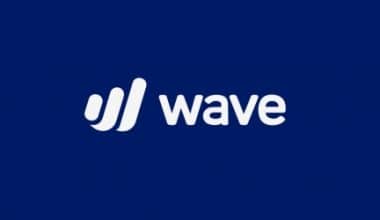Internal Controls in Accounting are a system of procedures, checks, and balances that allow organizations to maintain and ensure the accuracy of their financial information. It is designed to protect the assets of the organization and reduce the risk of fraud or errors in financial data. This article will explain the meaning of “internal controls accounting” and discuss who is responsible for the implementation of these controls, the different types and examples of internal controls accounting, the importance of internal controls accounting, and the principles of internal controls accounting.
What is Internal Controls Accounting?
Internal controls are a process used to ensure financial information’s accuracy and integrity. It is a set of procedures and checks that are designed to help organizations minimize the risk of fraud or errors in financial data. The purpose of internal controls accounting is to protect the assets of the organization, ensure the accuracy of financial statements, and prevent and detect fraud.
Internal controls in accounting include both manual and automated measures that are implemented to safeguard the organization’s assets. Policies and procedures, separation of duties, independent reviews, and physical security controls can all be used as part of these measures. The purpose of internal controls is to make sure that the organization is meeting its goals and that any fraud or mistakes in the financial data are found and fixed.
Who is responsible for internal controls?
The responsibility for internal controls usually lies with the organization’s accounting department. The accounting department is responsible for implementing, monitoring, and complying with internal control procedures. In addition, senior management is also responsible for ensuring that the internal controls accounting system is effective and efficient.
Types of Internal Controls Accounting
There are several types of internal controls accounting that organizations can use to protect their assets and ensure the accuracy of financial information. These types include physical, administrative, and technological controls.
Physical controls include measures such as locks, alarms, and security cameras. These measures are designed to protect the organization’s assets from theft or unauthorized access.
Administrative controls are made up of policies and procedures that make sure financial information is correct. These measures can include independent reviews, checks and balances, and segregation of duties.
Technological controls include measures such as computer security, encryption, and access control. These measures are designed to protect the organization’s assets from cyber attacks.
What are the 5 internal controls for accounting?
The five internal controls are segregation of duties, independent reviews, authorization, physical controls, and technological controls.
- Segregation of duties is the separation of responsibilities so that no one individual has control over all aspects of the accounting process. This includes separating the tasks of recording, processing, and reporting financial information.
- Independent reviews are performed by someone outside the organization to provide an objective assessment of the accounting process.
- Authorization is the process of ensuring that only authorized personnel have access to the organization’s financial information.
- Physical controls are measures such as locks, alarms, and security cameras that are used to protect the organization’s assets from theft or unauthorized access.
- Technological controls are measures such as computer security, encryption, and access control that are designed to protect the organization’s assets from cyber attacks.
Examples of Internal Controls Accounting
One example of internal controls in accounting is the segregation of duties. This involves separating the tasks of recording, processing, and reporting financial information so that no one individual has control over all aspects of the accounting process. Independent reviews are another example. These are done by someone outside of the organization to give an unbiased look at the accounting process. Authorization is another example, which involves ensuring that only authorized personnel have access to the organization’s financial information. Finally, physical and technological controls are measures such as locks, alarms, security cameras, and computer security that are used to protect the organization’s assets from theft or unauthorized access.
The Importance of Internal Controls Accounting
Internal control accounting is an important part of any organization’s overall business strategy. It helps to protect the assets of the organization and ensure the accuracy of the financial data. It also helps to prevent fraud and reduce the risk of errors in financial information. The implementation of internal controls helps create an environment of trust and accountability within the organization.
Why is internal control important in accounting?
Internal control is important in accounting because it helps protect the assets of the organization and ensure the accuracy of the financial data. It also helps to prevent fraud and reduce the risk of errors in financial information. The implementation of internal controls helps to create an environment of trust and accountability within the organization.
System of Internal Controls Accounting
The system of internal controls accounting consists of policies and procedures that are designed to help organizations minimize the risk of fraud or errors in financial data. These policies and procedures include segregation of duties, independent reviews, authorization, physical controls, and technological controls. The goal of these policies and procedures is to provide reasonable assurance that the organization’s objectives are being met and that any fraud or errors in the financial data are detected and prevented.
What are Examples of Accounting Controls?
Segregation of duties, independent reviews, authorization, physical controls, and technological controls are all types of accounting controls. Segregation of duties is a way to make sure that no one person is in charge of all parts of the accounting process. This is done by giving different people the jobs of recording, processing, and reporting financial information. Independent reviews are performed by someone outside the organization to provide an objective assessment of the accounting process. Authorization involves ensuring that only authorized personnel have access to the organization’s financial information. Physical and technological controls are measures such as locks, alarms, security cameras, and computer security that are used to protect the organization’s assets from theft or unauthorized access.
Checklist for Internal Controls Accounting
When putting in place internal controls, it’s important to use a checklist to make sure that all the necessary steps are taken. The checklist should include the following items:
- Segregation of duties
- Independent reviews
- Authorization
- Physical controls
- Technological controls
Best Practices for Internal Controls Accounting
When implementing internal control accounting, it is important to follow best practices to ensure the effectiveness of the system. The best practices for internal controls accounting include:
- Adopting a risk-based approach to internal controls accounting
- Implementing a system of checks and balances
- Monitoring and reviewing internal controls regularly
- Ensuring that all policies and procedures are up to date
- Training employees on internal controls accounting
Principles of Internal Controls Accounting
The principles of internal control accounting are designed to help organizations minimize the risk of fraud or errors in financial data. These principles include:
- Establishing responsibility
- Separating incompatible activities
- Documenting procedures
- Safeguarding assets
- Monitoring performance
Software Solutions for Internal Controls Accounting
To ensure the effectiveness of internal controls accounting, organizations can use software solutions to streamline the process. These software solutions can help organizations automate the process of implementing, monitoring, and complying with internal control accounting procedures. Some of the most popular software solutions for internal controls accounting include
- AuditWare
- ComplianceBridge
- AuditControls
- ComplianceMonitor
- ComplianceOne
What are good internal controls?
Good internal controls are measures that are designed to protect the organization’s assets and ensure the accuracy of financial data. Policies and procedures, separation of duties, independent reviews, and physical and technological controls can all be used as these controls. The goal of good internal controls is to provide reasonable assurance that the organization’s objectives are being met and that any fraud or errors in the financial data are detected and prevented.
Is bank reconciliation an internal control?
Yes, bank reconciliation is internal control. Bank reconciliation is a process that is used to ensure the accuracy and completeness of the organization’s financial records. It involves comparing the organization’s bank statement with its records to make sure that all transactions are accounted for and that the bank statement is correct. Bank reconciliation is an important internal control that helps protect the organization’s assets and ensure the accuracy of the financial data.
What are the 17 principles of internal control?
The 17 principles of internal control are:
- Establish responsibility
- Separate incompatible activities
- Document procedures
- Safeguard assets
- Monitor performance
- Maintain adequate insurance
- Conduct periodic reviews
- Adopt a risk-based approach
- Implement a system of checks and balances
- Utilize proper authorization
- Utilize independent reviews
- Ensure compliance with laws and regulations
- Maintain accurate records
- Implement physical controls
- Utilize technological controls
- Train employees
- Monitor and review internal controls regularly
What is the most important internal control?
The most important internal control is the segregation of duties. This means dividing up the tasks of recording, processing, and reporting financial information so that no one person is in charge of the whole accounting process. Segregation of tasks helps to protect the organization’s assets and ensures the accuracy of the financial data.
Internal Controls and Organization Size
As a company grows in size, its internal control system becomes more complex. When there are numerous employees and/or locations, the founders do not have the time to maintain complete oversight. Furthermore, when a company becomes public, extra financial controls must be introduced, particularly if the firm’s shares are to be put up for sale on a stock exchange. As a result, the cost of controls tends to rise with scale.
Detective vs. Preventative Controls
Control activities like authorization, documentation, reconciliation, security, and separation of roles are examples of internal controls. They are roughly classified as preventative and investigative activities.
Preventative control activities, which include detailed documentation and permission standards, try to prevent errors or fraud from occurring in the first place. A fundamental component of this process is the separation of tasks, which ensures that no single individual is in a position to authorize, record, or be in the custody of a financial transaction and the associated asset. Internal controls include invoice authorization and expense verification.
Preventative internal controls also involve restricting physical access to equipment, inventories, currency, and other assets.
Detective controls are backup procedures meant to catch objects or events that the first line of defense missed. The most significant activity in this context is reconciliation, which is used to compare data sets. When substantial disparities are discovered, corrective action is performed. External audits from accounting companies and internal audits of assets such as inventory are examples of detective controls.
Disadvantages of Internal Controls
Despite their usefulness in accounting accuracy and operational efficiency, internal controls have some downsides. Internal controls are easy to circumvent since the effectiveness or performance of a company’s internal controls is left to the opinions and judgments of humans. In certain cases, auditors develop opinions based on how efficient a company’s operations are without paying close attention to internal control systems and procedures.
Conclusion
Internal controls in accounting are a system of procedures, checks, and balances that allow organizations to maintain and ensure the accuracy of their financial information. It is designed to protect the assets of the organization and reduce the risk of fraud or errors in financial data. This article has discussed the meaning of “internal controls accounting,” who is responsible for the implementation of these controls, the different types and examples of internal controls accounting, the importance of internal controls accounting, and the principles of internal controls accounting.
Organizations need to have a system of internal controls over accounting in place to protect their assets and ensure the accuracy of the financial data. Policies and procedures, separation of duties, independent reviews, authorization, physical controls, and technological controls should all be part of the system. Organizations should also follow best practices for internal control, such as using a risk-based approach, putting in place a system of checks and balances, monitoring and reviewing internal control regularly, and training employees on internal control accounting.
Related Articles
- INTERNAL CONTROLS: Meaning and Examples
- MANAGEMENT CONTROL SYSTEMS: Types, Features, and Examples)
- Financial Audit: All you need, Simplified!! (+ Detailed pdf)
- Risk Management Strategies: 5+ Strategies You Can Follow Now!!!
- CAPITAL CONTROLS: BEST PRACTICES WITH PRACTICAL EXAMPLES






